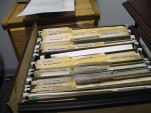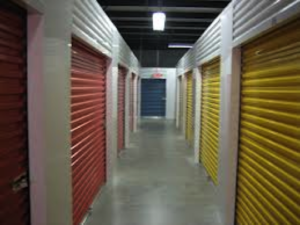I look at the last week of the year as a super productive week since I am not scheduled to work, and I can spend time getting myself ready for the new year. I want to be as organized as possible before January 5, 2015, which is my first day back to work! Below is a list of suggestions that may help you start your new year off a bit more organized.
Donations 
-If you want to maximize your donations for the 2014 tax year, take one more look through your closets, bookshelves, cabinets, attics, basements and garages to pull anything out that needs to be donated. Children’s toys and books are usually a gold mine for most donation establishments.
-After the holidays, as you integrate your new gifts, take stock of your duplicates, triplicates or otherwise unwanted things that can be better utilized by others.
-Keep in mind that you shouldn’t wait until December 31 to drop off your donations, because if the center hits their capacity level, they may stop accepting donations.
-Some donation centers will pick up your unwanted goods as long as you are on their schedule. Some donation center choices are GreenDrop, Vietnam Veterans of America, The Salvation Army, and Impact Thrift Stores.
-Make your final online cash donations as soon as possible since you don’t want to get stuck with slow or crashing websites at the last minute.
Files 
-Assuming that you have them, the end of the year is a great time to purge your old files and create new ones. If you need help creating a filing system, a professional organizer can help. You can go to the ‘Find an Organizer’ tab at the top of this page.
-Go through your 2014 bills, pull them out of their files, and clip or band them together if you are going to need them for your taxes. If you don’t need them for your taxes, I would suggest shredding anything that has personal information or account numbers. Most of my clients shred their department store bills and hold onto some of their utility bills for another year (I think they just want the security of having them…just in case).
– A filing cabinet or file box are both great choices to keep your files organized and accessible.
-If you scan your bills and receipts, remember to create new files on your computer.
Hopefully, there is something here that will help you start 2015 off with a little more organization in your world.
 I love the idea that someone can use a storage unit as a business location, a man cave, a wine cellar, or as a place to store their cool sports car.
I love the idea that someone can use a storage unit as a business location, a man cave, a wine cellar, or as a place to store their cool sports car.
I love that a college student can use a storage unit to store their dorm rooms over the summer and that someone can store excess furniture while their house is being marketed for sale.
I love that a builder can use a storage unit to store supplies while they are doing a renovation.
I hate the idea that people are using storage units to store old, dirty appliances, inexpensive furniture, and things that are eventually going to go in the trash, get donated, or get sold.
I hate that people abandon their units with valuable items in storage units and that there are reality TV shows based on this.
During the past couple of weeks, we have worked in storage units, and I am so glad we could help clients get out from under the stuff that was being stored— which had less monetary value than the month’s rent of the unit.
Understandably, people go into storage units for a valid reason initially. In the words of my eloquent husband, “storage units can take on a life of their own.” The items being stored take root in the unit, and the bill is on autopay. This makes it easy to forget or avoid the whole thing.
Many times people no longer know what is in their unit— a hint to me that there is minimal value, emotionally and financially.
Before you make the decision to take on a storage unit, think of the following:
If you answer these questions and can develop a plan, rent the unit.
I hope this advice helps you make a good decision and prevents you from being burdened by a storage unit that takes on a life of its own. If renting a storage unit is the right thing for you, I hope that you have picked up a hint or two to simplify the process.
 With the holidays and photo taking season coming up, it’s not too early to start taking some steps toward organization. This will make it easier to retrieve photos, create cards and books (think gifts).
With the holidays and photo taking season coming up, it’s not too early to start taking some steps toward organization. This will make it easier to retrieve photos, create cards and books (think gifts).
Because organizing the past can be overwhelming some people choose to start with the current. My personal choice is to do the old ones as well. Decide whether you want to go back and clean up all of your old photos OR do you want to start from now.
Download photos from your phone, camera and tablet frequently. If you lose your phone- your photos could be gone forever.
There are many software programs, some are great for sharing, some are great for printing cards, invitations and pretty much whatever you want, others not so much. Choose a program that meets your needs. Some of the more popular ones are: Linea, Shutterfly, Picasa, Flickr, and there are many more available your computer/laptop may already have software on it. If you are a Mac user iPhoto is good for organization.
When you are looking through your photos delete what you can, they take up a lot of space and we don’t want to use up space for bad photos.
Delete:
Some programs will allow you to tag your photos and rate them. That will help you sort them more easily if you are searching for something. This may not be necessary but it is available in some programs.
Now you are ready! You can easily create and print your cards, photo books photos on canvas and the myriad of other products available.
The final step is to BACK UP, BACK UP, BACK UP.
It’s always reassuring to know that my clients take my advice to heart. We joke that when I’m not around to help them get organized, they often ask themselves, “What would Anna say?”
What would I say? I ask a lot of questions that help me determine what’s going on beneath the surface. Then I can focus on the appropriate solution.
“What is good enough?” Perfectionism gets in the way of moving ahead. If you find a system that works for you even a little, go for it! You can always modify and improve as you go along. “Good enough” does not have to be 100%. One client has gained so much insight with this question that she has been able to accomplish more because she spends less time on the details that do not matter, more on what does matter.
“How does that define you?” If it doesn’t define you in a meaningful way, why do you keep it, take care of it, and devote valuable space to it? One client has been able to look at her life’s treasures and been able to really choose what defines her versus being defined by all of her belongings.
“How do you feel when… you are buying your 15th green long sleeve cotton tee shirt?” Increasing self-awareness is the first step in modifying or accepting behaviors. A client with eight of the same type of jacket was amazed when I asked this question — a huge Aha moment!
“Do you notice any patterns here?” What items do you end up donating? What’s hanging in your closet? Are there patterns of excess or waste? When reviewing the items that a client was donating, I asked her this question and the pattern was that most of the items came from a specific store, now she only goes to that store when she needs something basic at the last minute.
“Start anywhere.” When a client doesn’t know where to start, I like to suggest that they just start somewhere, anywhere. You can start right to left, or left to right, sometimes starting with the floor might be the right solution.
“Start with the low hanging fruit.” Many times when looking at a room full of clutter, all you see is the clutter. A client used this approach when looking at her garage full of years of accumulates stuff. When she looked at the large items and the items on the surface, she was able to make immediate decisions. Once these items were removed the process became more manageable.
When we recognize habits that bog us down with extra “stuff” or cause chaos in our lives through disorganization, we are on our way to a more peaceful and productive life!
In July, I was in a new doctor’s office and they handed me a three page Medical History to fill out. You are kidding me right? Another pathetic Boomer moment (okay, I hate the term Baby Boomer but haven’t come up with a better one).
Regardless of how I feel about my doctor asking for so much information, I realize it is important. Especially if you consider that preventable medical errors are the sixth biggest killer in America, according to the Institute of Medicine. It is important to have your information well organized so you can locate it when you need it. Sometimes a family member will need access to your medical information as well, like I did with my mother.
Last summer my mother was hospitalized for an unknown illness. It took them three days to figure out what she had. My sister and I took her to the emergency room and they were asking all kinds of questions that we could not answer. Things that were relevant, like what types of medications she was taking, what other diagnoses she had and some other stumpers. My mother has chosen not “to burden her children with this nonsense.” Luckily my mother saw the value in paying the fee to become a private patient when her physician’s office changed their business model. We had great access to information from his office, on a Friday night!
I immediately started tracking different things in Evernote. Now every time I go to the doctors I record my blood pressure, and why I went to see them. I have created a record of what meds and vitamins I am taking. I have also gone back and recreated what I could by looking at my insurance company web site, and that has jogged my memory.
Does it matter if it is on paper or electronic? Not at all. I have one client who uses a notebook. We divided it up into sections by medical issues- cardiac, back, skin etc. I prefer the electronic method, however it is important that someone know how to access the information.
What should be included in your record?
I always keep a list of questions for the doctor with my records.
Now that you have a clearer idea of what you need to do to be more prepared to manage your health… go ahead, get started. It could be a life saver!
napo-gpc.org x dresslands Backless Dress – Open Back Cream Long Sleeves
This women’s napo-gpc.org x www.dresslands.com/c/backless-dresses/ open back cream backless long sleeves dress is the perfect piece to build a maternity wardrobe! The design allows the trouser to sit at your hips, directly under that adorable baby bump, while pant itself continues in a stretch material that slides over the baby and rests at the rib cage area. The pant legs are designed to end just above the ankle, and have small zipper accents to add to the casual look. Paired with a casual top and comfortable shoe, these pants offer a classic look that addresses the needs of the mom-to-be.
The details of this napo-gpc.org x dresslands open back cream backless long sleeves dress are:
• pleating to waist
• zip detailing to ankles
• elasticated waist to reverse
• designed to fit through all stages of pregnancy